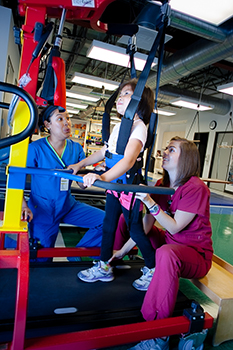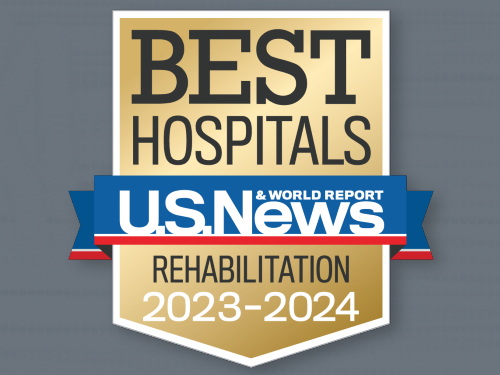Cerebral palsy (CP) is the most common motor disability in childhood, and spastic CP affects about 80% of people who have the disorder. Population-based studies from around the world report a prevalence estimate of one in 500 live births for spastic CP. While intellect and language skills are usually normal, children with spastic diplegia or hemiplegia often walk on their tiptoes and have trouble relaxing the muscles of their legs sufficiently to have a normal gait. Children with spastic quadriplegia have difficulty moving without the assistance of powered mobility devices.

Dr. Shah is fellowship trained in pediatric neurosurgery with special expertise in the surgical management of spasticity and dystonia in children, and performs selective dorsal rhizotomies and baclofen pump placement using advanced techniques. He is also an expert in pediatric epilepsy, craniofacial surgery and craniocervical spine surgery.
Dr. Shah was recruited from Washington University in St. Louis, Missouri, after completing his fellowship at St. Louis Children’s Hospital under world-renowned pediatric neurosurgeon Tae Sung Park, M.D. Dr. Shah is the recipient of numerous awards and was elected to Sigma Xi Scientific Research Honor Society in 2002 and Alpha Omega Alpha Honor Medical Society in 2005.
“Although there is no cure for spastic cerebral palsy, a number of treatment options exist that can alleviate the symptoms and in some cases allow a patient to gain greater functioning in the affected limbs,” he says. “Treatments range from oral medications – the least invasive – to select dorsal rhizotomy, and depend on the child’s presentation.”
Oral baclofen or muscle relaxants relax stiff or contracted muscles but may not always be effective. Because they have side effects ranging from drowsiness and changes in blood pressure to the risk of liver damage, their use requires continuous monitoring. They’re appropriate for children who need only mild improvement in muscle tone or who have widespread spasticity.
Botulinum toxin (Botox®), administered by local injection, relaxes contracted muscles by keeping nerve cells from over-activating them. Muscle relaxation occurs within days and peaks after a month, with the effect of the injection lasting three to four months.
Intrathecal baclofen therapy (ITB) requires a surgically implanted programmable pump, which infuses baclofen directly into the patient’s spinal fluid via a catheter inserted into the spinal canal. Ongoing treatment requires refilling of the pump and frequent monitoring to ensure the appropriate dosage is given. ITB is usually used to help spastic quadriplegics with poor trunk control, who have had multiple orthopedic surgeries and are unable to walk unassisted.
Select dorsal rhizotomy (SDR) is most effective for patients 2 to 40 years of age with spastic diplegia or spastic hemiplegia, who have good trunk control and have not had multiple orthopedic procedures. SDR provides an immediate permanent reduction in spasticity and the potential to walk independently within one to two years with intensive postoperative physical and occupational therapy.
The select dorsal rhizotomy procedure takes about two and a half hours, with a five-day hospitalization, followed by six to 12 months of intensive outpatient physical rehabilitation. Outcomes are excellent in carefully selected patients.
Therapists at TIRR Memorial Hermann Pediatric Outpatient Rehabilitation work closely with Dr. Shah and other physicians who refer patients with cerebral palsy for rehabilitation following surgery, and also with nonsurgical patients who wish to gain more independence. Clinicians perform assessments pre- and post-baclofen pump implantation and make recommendations. They also work with physicians preparing patients for rhizotomy and assess the efficacy of the intervention.
“Our program is unique in that we have the resources to treat people with cerebral palsy from childhood through adulthood,” says Jessica De La Rosa, PT, DPT, NCS, director of TIRR Memorial Hermann Adult and Pediatric Outpatient Rehabilitation. “Our overarching goal is mobility, self-care and communication through physical therapy, occupational therapy and speech-language pathology. Establishing a rapport and relationship with a therapist is important for patients with cerebral palsy. With their increased life expectancy, we can meet their rehabilitation needs over the long haul.”
At the Kirby Glen Center, therapists use the Lokomat®, a form of functional robotic gait therapy, to help patients with CP who require significant assistance to walk or have significant deviation in their gait pattern. The device provides biofeedback that shows when muscles aren’t being contracted, which alerts the therapist to when and how the muscles are being used. For children age 4 and up, a digital smiley face is linked to the activity of specific musculature; the goal is a big smile.
Pediatric LiteGait® provides another type of body-weight support treadmill training that allows therapists to unload the patient’s body weight to help facilitate his or her walking pattern. “The goal for both therapeutic devices is to improve over-ground walking,” De La Rosa says. “Progression depends on the needs of the patients but might include starting on the Lokomat with the robotic legs, then moving to the LiteGait over the treadmill, then using the LiteGait over ground until the child or adolescent can walk over ground using an assistive device, such as a posterior rolling walker or four-arm crutches. During the use of any of these devices, children may need orthotics. The clinician works with the orthotist to prescribe the best orthotics for the patient and will also provide training in its use during walking, with the overarching goal of improving balance, walking and transfers, all of which add up to mobility.”
Dr. Shah believes that many children with CP in the Greater Houston area have been lost to the health care system. “There isn’t another team that works like ours to see children together, rather than having them bounce around from specialist to specialist,” he says. “The right treatment is a huge quality of life game-changer for these children. It’s great when we can offer that kind of help and hope, whether it’s surgery, medical treatment or optimization of their therapy regimen.”
